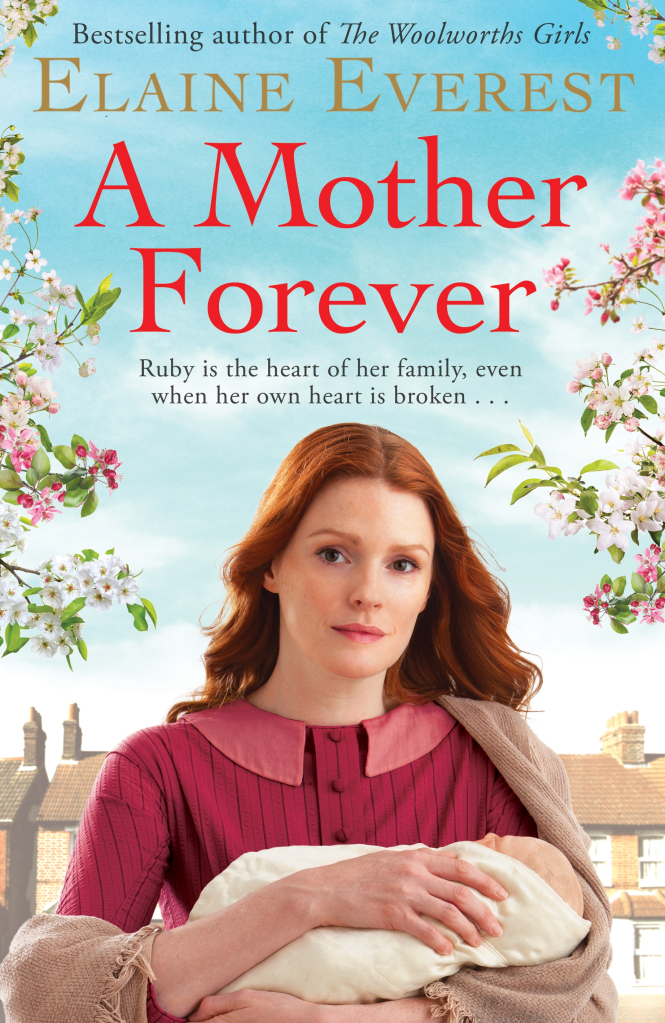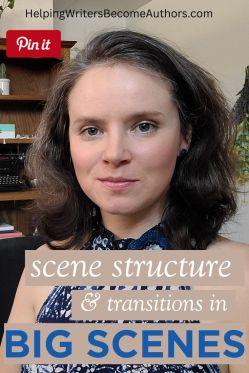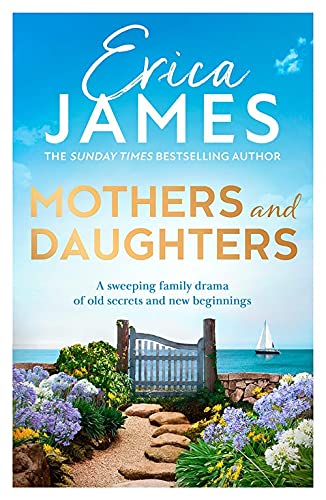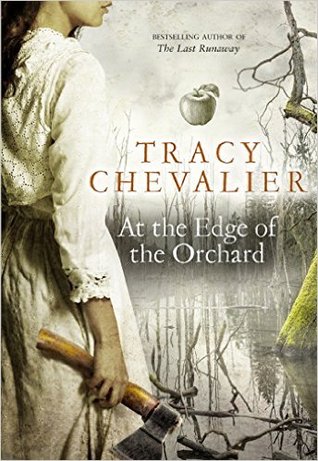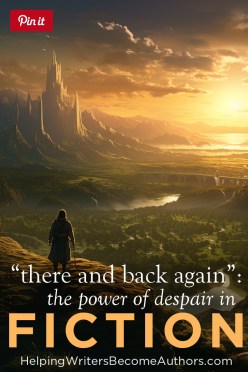 Someone asked me recently what I thought made an original story. One piece of my answer was that I don’t believe audiences so much seek original premises as original emotional experiences. We want to experience stories that evoke emotion and create catharsis. We don’t just want a comedy that makes the corner of our mouths crinkle; we want a comedy that makes us laugh so hard we’re crying and hiccupping. We don’t just want a drama that distracts us for an hour; we want a drama that keeps us thinking for weeks, months, years afterward. We don’t just want a sad story that makes us nod our heads at how awful the world can be; we want a sad story that makes us weep from the depths of our own souls. We want fiction that changes our lives. And to that end, today I want to speak about the power of despair in fiction.
Someone asked me recently what I thought made an original story. One piece of my answer was that I don’t believe audiences so much seek original premises as original emotional experiences. We want to experience stories that evoke emotion and create catharsis. We don’t just want a comedy that makes the corner of our mouths crinkle; we want a comedy that makes us laugh so hard we’re crying and hiccupping. We don’t just want a drama that distracts us for an hour; we want a drama that keeps us thinking for weeks, months, years afterward. We don’t just want a sad story that makes us nod our heads at how awful the world can be; we want a sad story that makes us weep from the depths of our own souls. We want fiction that changes our lives. And to that end, today I want to speak about the power of despair in fiction.
Why such a depressing topic? Well, first, you’ll note the title is “there and back again”!
I have spoken before about my soul-deep belief in the inherent hopefulness of the story arc, as well as the sobering power of fiction to change those who partake of it. But when I speak of “hope,” I do not speak of a fluffy, sugary ideal. The hope I speak of—the hope I have encountered and known in my own life—is grimy and blood-streaked, battle-tested and keen-eyed. This is not the hope of denial, the hope that pretends there’s nothing so very wrong after all. This is the hope that looks life in the eye, sees it to the depth of its pain and confusion, and says, “Come on.”
That’s hope. And stories are full of hope. The very arc of story itself—the promise of growth and healing—is hope. As authors, the only way we will be able to evoke that level of life-changing hope is if we are willing to embrace its opposite and to understand, equally, the power of despair in fiction.
To Offer Stories of Hope, We Must Be Willing to Reveal Despair in Fiction
I wrote earlier this year about shadow theory, and how a thing’s opposite is always inherent within it. There is no light without darkness; no day without night; no up without down. And so there is no hope without despair. (Indeed, what need is there for hope if there is no despair?)
In our extraordinarily complex and often bewildering world, in which we often feel so beleaguered by threats beyond our control or even consciousness, despair is a prevalent emotion. It is an emotion that needs to be explored in our fiction. As such, it is an emotion that needs to be understood and presented in relation to its powerful opposite of hope.
The topic of the importance of despair in fiction has been written on my “post idea” list for almost a year now, inspired when I read my journal entries after I rewatched The Lord of the Rings last year. I finally decided to write this post after producing the Archetypal Character Guided Meditations a few months ago. As I got deeper and deeper into creating those archetypal journeys for the Maiden, the Hero, the Queen, the King, the Crone, and the Mage, I found myself thinking, Wow! These are dark!
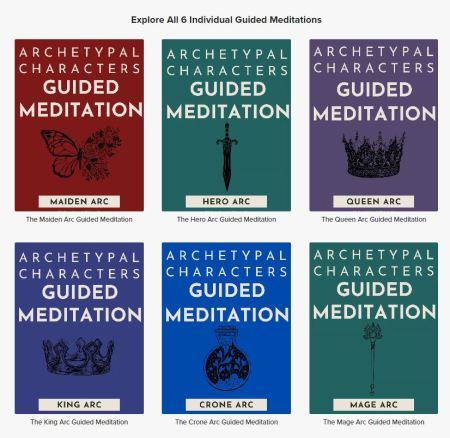
Archetypal Character Guided Meditations

Writing Archetypal Character Arcs (affiliate link)
As I wrote and recorded the Midpoints and Third Plot Points of so many of these archetypal journeys, I often found myself overwhelmed with emotion to the point of choking up. It was one thing to remain in the mental space of writing about the archetypal beats, as I did in my book Writing Archetypal Character Arcs, and another altogether to encounter these archetypes within the depths of the dreamzone. Particularly in exploring the King’s sacrifice and the Crone’s encounter with mortality, a part of me kept squirming and thinking, Oh, this is too much. People are going to think this is depressing!
Truly, though, that is the power of archetype—the power of story. It has the power to take us there—to the depth of our own despair, so we may see it and face it in a cathartic purge—and then take us back again—out beyond the dark night of the soul and once more into the hope of sunlight.
As Gandalf says in The Fellowship of the Ring:
It is not despair, for despair is only for those who see the end beyond all doubt.
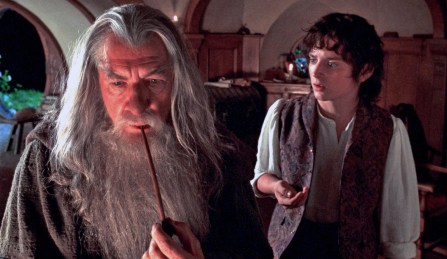
The Lord of the Rings: The Fellowship of the Ring (2001), New Line Cinema.
My Journey “There and Back Again” With The Lord of the Rings
In my own personal experience, there is no story that more potently demonstrates the archetypal power of going “there and back again” than The Lord of the Rings. For me, Lord of the Rings has become something sacred—an experience of synchronicity and blessing that I can never think about without experiencing a tremendous wave of emotion.
I didn’t read the books until after I saw the films, and I didn’t properly see the films until 2019. As a child, I wasn’t allowed to see them because they featured a “wizard.” At one point, I did see Return of the King on an international flight but didn’t connect with it and didn’t return to watch the entire trilogy for many years. In retrospect, that little issue of timing was one of the most incredible gifts of my life.
Let’s just say that 2019 was the worst year I have ever experienced. It was a year in which, for the first time in my life, I knew despair. A few years earlier, the foundations of my life had been ripped out from under me, and everything I had ever believed in started crumbling around me, like old parts falling off a jalopy. No matter what I did, I couldn’t seem to stop it from happening. By the autumn of 2019, I was approaching the one-year anniversary of what had unexpectedly turned out to be an incredibly traumatic move to a new state. I was in bad shape, with no end in sight. For the first time, I thoroughly understood why people will do just about anything to make the pain stop.
I’ve spoken about my (ongoing) healing journey before, but the first major step down that road was a coincidence so meaningful it seemed miraculous. Shortly after moving in 2018, I had purchased the complete set of Lord of the Rings movies. I had been informed that the director’s cuts were the only way to see them, so I was determined my first experience should be the longer versions. But… I just never watched them.
During that difficult summer of 2019, I started the weekly practice of driving the thirty minutes to the nearest theater, just to get myself out of the house. This particular theater offered a feature they called “throwback cinema,” in which they brought back a classic movie every weekend. That fall, they were showing Lord of the Rings. I perked up. Since I had missed seeing them in the theater during their original runs, this seemed like an amazing opportunity. My only hang-up was that I was so set on watching the director’s cuts. Turned out… they were showing the director’s cuts.
So I went. And as I sat in that dark theater watching the majesty that is this story and this adaptation, I was touched. Deeply. I was touched, above all, by the despair. By a story that got it, a story that was willing and able to go all the way into the darkness after me and pull me out. The Two Towers, in particular—the darkest of the trilogy—showed me the face of that warrior hope.

The Lord of the Rings: The Two Towers (2002), New Line Cinema.
I left the theater and wept all the way home. I had wept a lot of tears that year. But this time something was different. This time, it was catharsis. I went home that night, ate a Hardee’s hamburger (that was literally soggy with my tears), went to bed that night, and from that moment on slowly started finding my way out of my dark night of the soul.
When I rewatched the films last year, I wrote this in my journal:
I want to talk a moment about stories—and what they have meant to me. I am watching LOTR right now, and I am reliving its profound impact on me three years ago, right around this time in the fall of 2019, after that brutal, brutal summer. I am blown away—again and again and again—by the gift that was given to me in the timing of these movies being shown that fall. It feels like they were for me. How many other people who saw them that fall were changed so unutterably by them?
They are stories, fundamentally, about hope—which means they are equally about despair. And that—at the depths of my dark night—was what I was encountering. That despair felt like an evil—not because the darkness was full of monsters, but because there was no light. And so when Sam tells Frodo (after proving his own words over and over again) that “There is some good in this world, Mr. Frodo, and it’s worth fighting for”—I heard him down to the depths of my soul—because what I needed was simply a light.
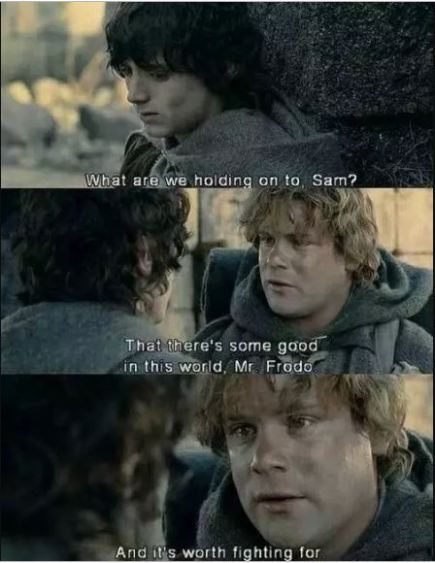
The Lord of the Rings: The Two Towers (2002), New Line Cinema.
At the time, I was almost confused by the depth of my response to those words—and how healing they were—because it wasn’t as if I felt opposed by evil. I just felt lost and alone, in the dark void with nothing to light my way. It was the darkness that was my evil, and Sam told me not to give up, to keep hope, to fight for my right to see the light again.
If you do not know despair, then I do not know if you can truly understand that story. If you’re in the light, or think you are, you just sagely nod along and congratulate yourself. But if you have tasted the darkness, then you know. You know what they’re all so afraid of. You know that the darkness lives in you—cold and void—and you know you carry the burden of it every day, like Frodo, and, like everyone else, you fear its power.
And yet… hope comes again. There is light once more—when you are faithful, when you do not give up, and when you have a Sam—Tolkien himself in this instance—to tell you you are not alone and not to give up.
There is so much beauty and truth in those stories. I think perhaps their legacy has been mostly the fantasy genre itself. Probably not everyone taps the deeper gifts. But, my God, the goodness J.R.R. Tolkien left for us—out of the darkness of his own horror and despair. He was my eagle—come to save me from Mt. Doom. God bless him.
For me, the gift of LOTR is that it does indeed take you “there and back again.” It takes you into the farthest reaches of despair, but then it takes you back out. And once it has brought you back, it looks you in the eye and says, “Yes, I see you as you are, and you are right: nothing is ever quite the same again.”
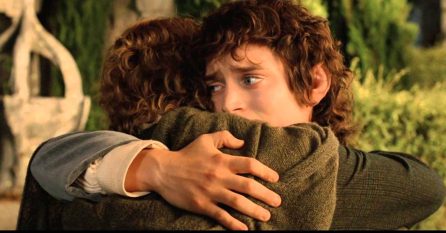
The Lord of the Rings: The Return of the King (2003), New Line Cinema.
5 Ways to Tap the Sacred Power of Hope and Despair in Fiction
I imagine most writers would agree with me in the sentiment that not only do I long to experience fiction of such life-impacting caliber, but also that I would count it the highest honor to write a story that could, in turn, affect even one person’s life so profoundly and positively. To that end, here are five suggestions to keep in mind when seeking to tap the partnered power of hope and despair in fiction.
1. “Going There”: Be Willing to Tap the Depth of Authentic Emotions
The first step is so simple and so obvious, and yet it is the hardest of all. Before we can make audiences feel anything, we must be willing to feel it ourselves. In order to write with authenticity, we must first be authentic with ourselves, to face the depths of ourselves where things are messy and ugly and bloody and terrifying and sometimes so, so painful. Even in sharing the most exhilarating emotions such as joy and love, we are required to access a profound level of honesty and vulnerability.
2. Don’t Squint at the Darkness
There are so many stories out there (many of them Lord of the Rings imitators) that tackle dark subjects. The darkest aspects of humanity are common fare in most stories, even comedies (an approach that can, in itself, be a powerful catharsis). The vast majority of these stories, in my experience, fall into two categories. Either they gloss over the darkness without ever truly exploring its depths or emotional effects, or they create a static experience of darkness and depression that fails to offer an equally true contrast of light and hope.
The gift of Lord of the Rings was not that it told a tale about an evil overlord with the power to blight the world into darkness. Many stories tell that tale with little to no resonance. The gift of Lord of the Rings is that it never squinted at its own darkness. Tolkien himself, as a veteran of World War I, had seen darkness. Despair was not a plot trope to him.

Tolkien (2019), Fox Searchlight Pictures.
3. Remember to Come “Back Again”
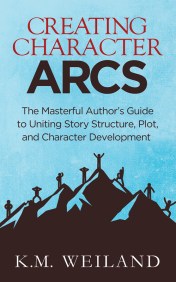
Creating Character Arcs (Amazon affiliate link)
Authors who are willing to descend into their own darkness can offer audiences a tremendous opportunity for vicarious catharsis. But stories also need to know how to extricate themselves from the dark night and come “back again” into the light. Even tragedies that focus on the consequences of despair and dark emotions or that follow their characters through un-redemptive Negative Change Arcs still find a shape that brings the story “back again” simply through the contrast of the story’s grim outcome with what could have been. Positive stories go further than that to show how the characters—and therefore the audience—may yet grow beyond the darkness of the “Lie” and into a more effective “Truth.”
4. Mine the Depth of Complex Polarities
The most powerful emotional experiences in fiction are those that take their audiences through a range of feelings. A story that makes us feel nothing but happy or nothing but sad is boring. Instead, look to the depth of complexity found in polarities: good and evil, happiness and sadness, hope and despair.
Studio Ghibli director Hayao Miyazaki is another artist famed for his capacity to create seemingly simple stories of profound emotional and psychological depth. (He, too, spoke to me at a time of deep doubt in my life.) Regarding his masterwork Princess Mononoke, he said:
…even in the middle of hatred and killings, there are things worth living for. A wonderful meeting, or a beautiful thing can exist. We depict hatred, but it is to depict that there are more important things. We depict a curse to depict the joy of liberation.
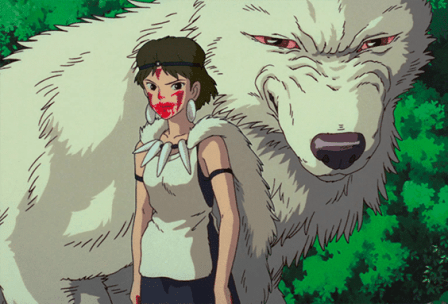
5. Create Genre- and Age-Appropriate Experiences
Before I close, I should include this caveat: if you’re going to go there—really go there—you must still be willing and able to hold your audience’s experience in compassion. The depth of despair highlighted in Lord of the Rings will not be appropriate in all genres or for all age groups, just as not all topics are appropriate in all venues.
But this does not mean that even the lightest of stories can’t (and shouldn’t) be founded upon the bedrock of the author’s willingness to “go there.” As discussed in this study of children’s reactions to the Pixar film Inside Out (in which I was honored to be cited), emotional honesty in fiction, even when portrayed with restraint, still has the capacity to deeply touch and change people of all ages.
In interviews, Miyazaki spoke about his belief in the importance of exposing even children to the truths of life:
I’m not going to make movies that tell children, “You should despair and run away.” But children most certainly have violence within them. Unless we touch upon that, I don’t think the film can be convincing to children.
***
In one way or another, this is a post I’ve been wanting to write for a while. Obviously, it’s a deeply personal post about a story that, for me, was a shatterpoint—a life-changing moment I will never forget or take for granted. For me, what I most needed at that time in my life was an experience that was able to tap despair in fiction. For others, the most important emotions will vary, but what doesn’t vary, I think, is the necessity of telling stories with a depth of authenticity, rawness, and courage, as well as a complex understanding of our human journey from one important emotion to another.
Wordplayers, tell me your opinions! Was there ever a time when you were particularly touched by the portrayal of despair in fiction? What about a different emotion? Tell me in the comments!
Click the “Play” button to Listen to Audio Version (or subscribe to the Helping Writers Become Authors podcast in Apple Podcast or Amazon Music).
___
Love Helping Writers Become Authors? You can now become a patron. (Huge thanks to those of you who are already part of my Patreon family!)


